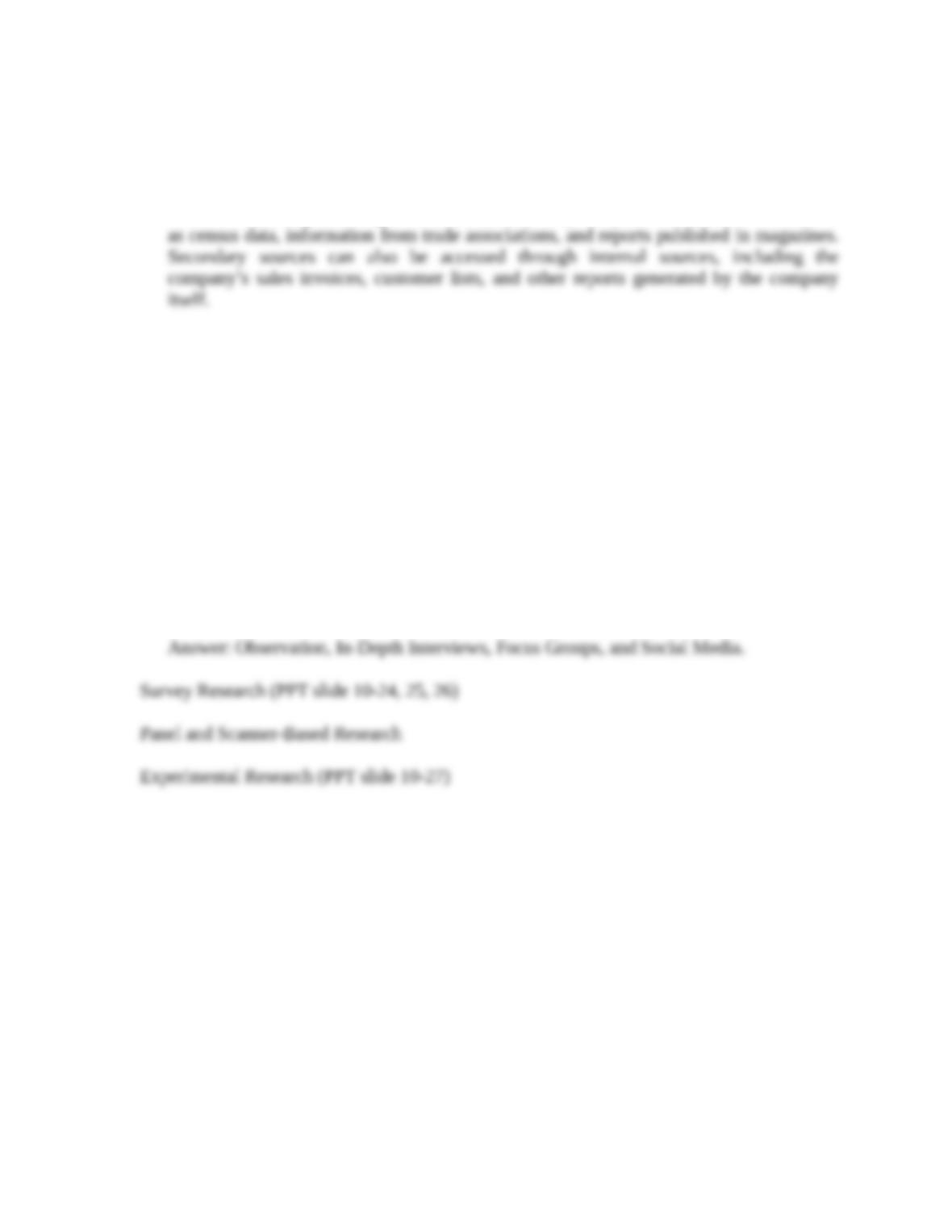The first step is to define objectives and research needs, which sounds so simple that managers
often gloss over it. But this step is crucial to the success of any research project because, quite
basically, the research must answer those questions that are im-portant for making decisions. In
the second step, designing the research project, researchers identify the type of data that is
needed, whether primary or secondary, on the basis of the objectives of the project from Step 1,
and then determine the type of re-search that enables them to collect those data. The third step
involves deciding on the data collection process and collecting the data. The process usually
starts with qualitative research methods such as observation, in-depth interviews, or focus
groups. The information gleaned from the qualitative research is then used in quantitative
research, which may include a survey, an experiment, or the use of scanner and panel data. The
fourth step is to analyze and interpret the data and ¬develop insights. The fifth and final step is to
develop an action plan and implementation. Although these steps appear to progress linearly,
researchers of-ten work backward and forward throughout the process as they learn at each step.
LO2 Describe the various secondary data sources.
External secondary data comprise information that has been collected from outside sources, such
as the U.S. Census, the Inter-net, books, articles, trade associations, or syndicated data ¬services.
Internal secondary data can also be derived from internal company records such as sales,
customer lists, and other company ¬reports and are analyzed using data mining and big data
soft-ware.
LO3 Describe the various primary data collection techniques.
Primary data are collected to address specific research needs. Techniques used for primary
qualitative research include observation, social media, in-depth interviews, and focus groups.
Techniques used for primary quantitative research include surveys (both offline and online),
scanner, panel, and experiments.
LO4 Summarize the differences between secondary data and primary data.
Compared with primary research, secondary research is quicker, easier, and generally less
expensive. However, if you are using secondary data using big data, then the investment in
programs supporting secondary data can be expensive. However, because secondary research is
collected for reasons other than those pertaining to the specific problem at hand, the information
may be dated, biased, or simply not specific enough to answer the research questions. Primary
research, in contrast, can be designed to answer very specific questions, but it also tends to be
more expensive and time-consuming.
LO5 Examine the circumstances in which collecting information on consumers is ethical.
Marketing researchers should gain permission to collect information on consumers, and it should
be for the sole purpose of con-ducting marketing research endeavors. Information should not be
collected under the guise of marketing research when the intent is to sell products or to fundraise.
In addition, marketers must take responsibility for protecting any information they collect.





